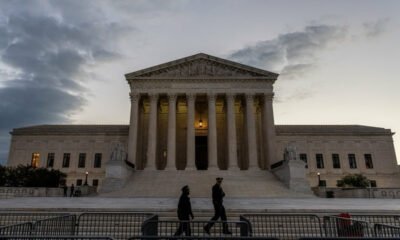Editorials & Opinions
64% of Sedona Voters Demand Relocation of Controversial Car Camp

The results of Proposition 483 in Sedona are decisive. Voters overwhelmingly rejected the proposed “Safe Place to Park” car camp for homeless workers, effectively halting plans set forth by the Sedona City Council.
Initially floated by the council in late 2023, the idea faced immediate criticism. Although city workers began preparation on the site before formal council approval, a referendum petition filed in March brought all progress to a standstill, awaiting the recent election outcome.
With nearly two-thirds of Sedona residents opposing the council’s move, the referendum results signal a significant rebuke. Unlike many elections marked by partisan divides, this vote reflects a clear, unified stance against the proposed camp.
Public sentiment may have been driven by a mix of factors. There are strong feelings among residents about the council’s premature actions, as well as a broader resistance to sanctioned camps for the homeless within city limits. Moreover, frustration lingers over the council’s failure to deliver on promises of affordable housing, initially pledged during the 2022 elections.
Critics point out that resources were misallocated to create a parking lot instead of truly addressing housing needs. The council’s approach suggests a desire to manage visible homelessness while neglecting more substantive solutions such as affordable housing developments.
Rather than investing in a dedicated camp, alternatives such as decriminalizing car camping or utilizing existing vacant properties were proposed but overlooked. The council’s focus seems to rest on creating a managed space that could obscure the issue rather than address its roots.
Legally, the referendum only nullified the council’s previous vote, but the significant public disapproval makes it unlikely for the project to proceed. There are also concerns regarding the usability of such a camp; factors like restricted check-in times and monitoring could deter potential users.
Many of Sedona’s homeless or transient workforce prefer to remain off the grid, living in non-visible areas, which may limit the effectiveness of a sanctioned campsite. This long-standing pattern points to deeper community issues surrounding housing and employment.
This referendum outcome may also serve as a wake-up call for the City Council to engage more effectively with the entire community. Previous meetings often see few attendees outside of retirees, leaving the voices of working parents unheard. Special arrangements are often necessary for these residents to express their needs, but a history of neglect has dissuaded many.
Yet, despite feeling sidelined by the council, community members continue to express their views through voting. The message from the electorate is now unmistakable: the council must take heed and re-evaluate its approach to housing and social welfare.
Moving forward, citizens hope that the council prioritizes long-promised affordable housing instead of temporary fixes. As housing affordability continues to decline amid stagnant wages, a shift in focus is imperative for addressing the urgent needs of the community.

















